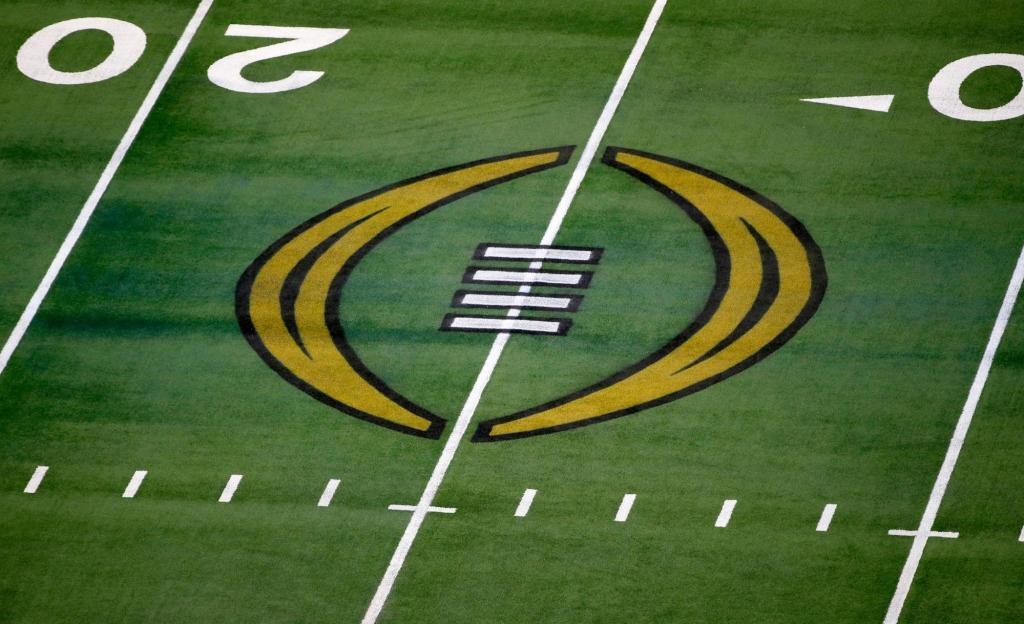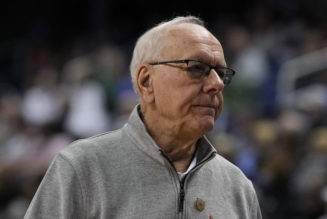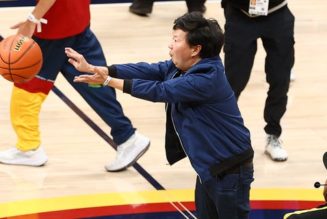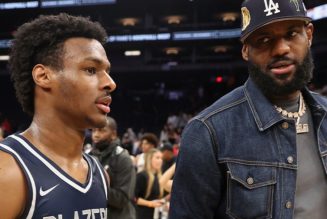
The Hotline’s predictions cover a broad array of topics, on the field and off, that will impact college football and basketball in 2024 and far beyond.
The industry is changing at an accelerating rate. With that evolution comes an enhanced level of interconnected issues on multiple levels (lawsuits, realignment, NIL, coaching changes, cord cutting, etc.) and increased pressures on the system.
Put another way: We will start experiencing college sports in dog time. The next year will feel like five.
(Predictions in rough chronological order.)
1. Arizona will reach the Final Four
The addition of guard Caleb Love (from North Carolina) gives Arizona a playmaker who has made big shots in the NCAAs. (Love scored 28 points against UCLA in the Sweet 16 two years ago, then 30 against Duke in the semifinals.) And generally speaking, these Wildcats are tougher and more athletic than Tommy Lloyd’s previous editions. We also should not overlook the cosmic rebalancing that often comes with the NCAAs: Virginia became the first No. 1 seed to lose in the first round, then won the title the next year. Now it’s Arizona’s turn, after collapsing in the first round in 2023 against No. 15 Princeton, to unleash a deep run into April.
2. The expanded CFP will exceed the hype
We believe College Football Playoff expansion is the biggest development in college sports since the 1984 Supreme Court ruling that gave conferences control of their media rights, with evidence surfacing throughout the year. The first piece: A media rights deal with ESPN sometime this spring that will carry an annual value of $1.75 billion — far above the $1.3 billion figure reported (by ESPN). And once the season begins, the expanded event will dominate the narrative on a weekly basis, boosting TV viewership and enhancing the number of relevant games and teams. Fans will be left wondering why the original CFP, in 2014, didn’t have 12 teams.
3. The NCAA’s radical plan will stall
In December, NCAA president Charlie Baker proposed a subdivision that would require schools to invest at least $30,000 per player per year (for half of their athletes) in education trust funds and handle NIL compensation in-house — a total annual cash outlay that will exceed $10 million at the top levels of the sport. No idea that radical will ever receive enough support to pass, at least not in its original form and not without Congressional support. That support won’t come; the schools will disagree on the details; and the Big Ten and SEC, which hold outsized influence on the future of college football, will walk away deeply unsatisfied.
4. The ACC will hold (for now)
Any school wishing to leave the ACC faces a mid-August deadline to announce its departure in the following year. We expect that deadline to pass without incident — Florida State isn’t going anywhere in 2025, nor is anyone else. That said, it will become increasingly clear over the next 11 months that the Seminoles are not long for their current home. The 2026 season feels like the right time for an official divorce as it coincides with the start of a new media contract cycle for the College Football Playoff. And when the Seminoles leave, they won’t be alone.
5. Gonzaga will not join the Big 12
Commissioner Brett Yormark sees untapped value in college basketball and has targeted Gonzaga as a potential addition for the best hoops league in the country. Yormark may very well be right about the sport’s valuation over the long haul, but the Zags simply don’t bring enough new revenue for the existing schools. In fact, the slight but noticeable on-court regression in Spokane has come at just the wrong time. Gonzaga had a narrow path to membership under the best of circumstances. But as an unranked team on the NCAA bubble, it’s an even tougher sell to the Big 12 presidents and media partners.
6. The ‘Pac-2’ will struggle
Washington State and Oregon State have made all the right moves since being cast adrift as a two-team conference, and we expect them to sign a media rights deal for their home football games that provides as much exposure as they could reasonably expect. (In that regard, visibility is more important than cash.) But traction will prove difficult next fall. Neither roster is good enough to contend for an at-large berth in the expanded CFP while the sport’s attention shifts, almost entirely, to the enlarged Big Ten and SEC.
7. Utah will win the Big 12 football title
The Utes are perfectly positioned to claim the title in their first season. For one thing, there is nothing close to a dominant team in the new edition of the Big 12. For another, the Utes have one of the best combinations of coaches (Kyle Whittingham), quarterbacks (Cam Rising) and staff stability in the conference. Also, the Hotline believes deeply in reversion to the mean, and Utah’s unrelenting injury issues in 2023 will give way to above-average health next fall. We expect solid seasons from Arizona and Colorado, although neither will join the Utes in the expanded CFP. Arizona State is several recruiting cycles away from relevance.
8. Market pressures will increase
We expect both cord-cutting and the shift to streaming to continue in 2024 — look for ESPN to finalize details of its direct-to-consumer offering — as the demand for live sports (and news) increases. The end result? A framework for the new world order, in which a more efficient media marketplace sparks dramatic change at the highest levels of college football. The days of splitting media rights revenue equally within conferences are over. Never again will Indiana and Mississippi State (to name two) receive the same paychecks as Michigan and Georgia, respectively. And that, folks, will spur The Great Bifurcation.
9. Oregon will thrive in the Big Ten
Alone among their West Coast peers, the Ducks will enter the Big Ten in position to compete with Ohio State for the conference title and a berth in the CFP. (The Buckeyes will be absolutely loaded.) What of the other new members? Washington’s revamped roster won’t be good enough; USC’s defense won’t hold; and UCLA is simply not equipped, in any manner, to rise above the giant mass of mediocrity. Oregon has all the needed ingredients on the field (quarterback, playmakers, talent on the lines) and off (coaching stability, NIL support, etc.) to navigate the transition smoothly. The others do not, in one regard or another.
10. The NCAA will settle House
We are 12 months from the trial date for the most daunting challenge to the NCAA’s amateurism rules, an antitrust case (based on NIL and revenue sharing) that was recently granted class status and carries potential damages in the billions. (The named plaintiff is former ASU swimmer Grant House.) We expect a settlement in late 2024 or early 2025 that delivers the final blow to the NCAA’s longstanding economic model and ushers in a new era in which football and basketball players are treated like professionals and consolidation unfolds at the highest level. Thanks to House — and other cases against the NCAA — college football’s super league will morph from theoretical to inevitable.
*** Send suggestions, comments and tips (confidentiality guaranteed) to pac12hotline@bayareanewsgroup.com or call 408-920-5716
*** Follow me on Twitter: @WilnerHotline
*** Pac-12 Hotline is not endorsed or sponsored by the Pac-12 Conference, and the views expressed herein do not necessarily reflect the views of the Conference.
Services Marketplace – Listings, Bookings & Reviews









